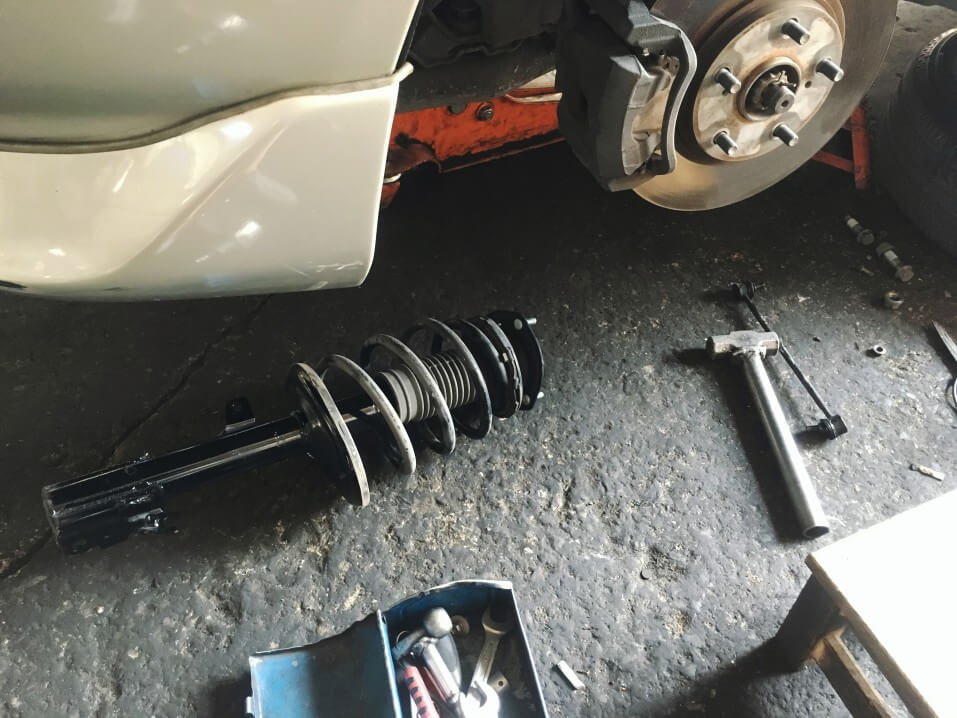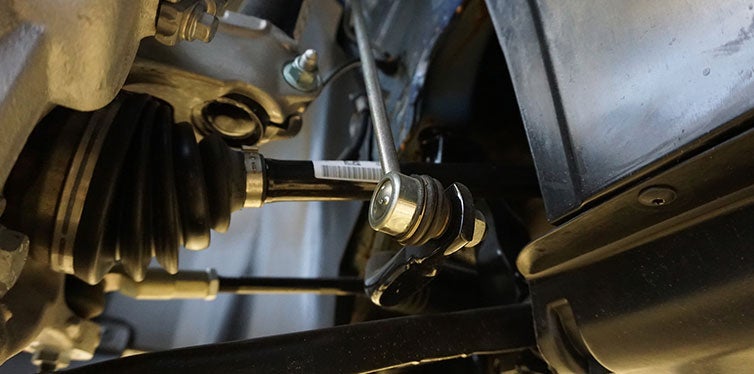The key is to identify signs of bad shocks and struts and to know when it is time to have them replaced. The changes tend to occur gradually so that you do not notice these differences and simply get used to them. Thus, you are not really noticing the wear and tear on your suspension when you are driving your car.

What Are Shocks and Struts?
Even if you are driving on good roads, there will still be situations that make the ride bouncier than you are used to. Shocks and struts are key in making your car run more stable, especially when you turn, accelerate, brake, and go over uneven surfaces. Most vehicles nowadays use one of the two (shocks or struts) or a combination of both.
While both have similar functions, there are some differences between the two. A shock is independent while the strut puts together the shock and other features in one unit. They both keep your automobile stable while running and keep the tires on the ground. Without your shocks, the car may bounce up and down continuously.
Because of their function, it is natural that shock absorbers wear down after months or years (depending on how often and how far you drive). When you observe bad struts symptoms, you need to have them checked and replaced. When you drive through rough roads or carrying heavy loads, they might get worn out more quickly. Normally, you will need to replace your shocks and struts after 75,000 to 90,000 miles, but with heavy use, you might need to do it after 40,000 to 50,000 miles.
The Six Signs of Worn Shocks and Struts
- Car Is Veering Or Sliding
If you are driving on extremely windy conditions, like a tornado, then your car veering or sliding is normal. When this happens during a clear day, then this is one of the first bad shocks symptoms. This is because worn-out shocks mean your automobile becomes unstable while driving. If you find yourself having to correct your car’s direction, even in mild wind conditions, then have your vehicle checked by an expert.
- Uneven Wear On The Tires
One of the signs of bad struts and shocks is when your tires have patchy areas or wear. This is because your tires are not firmly flat on the road. Tires should keep uniform contact with the road at all times, otherwise, you have a higher risk of hydroplaning or getting a flat.
- Rocking, Rattling, and Rolling
When your ride is choppier than normal, your car has a problem with its shocks and struts. Rocky and rough roads will make your vehicle shake, but it shouldn’t happen while driving over railroad tracks and simple road bumps. The shocks should absorb and minimize the vibrations, so when it is worn out, you will feel them. Worse, it is not only uncomfortable, but it will also add unnecessary and dangerous pressure to the other parts of your car.
- Swerving While Braking
At times, braking may cause the front end to noticeably dip. This is a sign of bad shocks. When ignored, it may lead to swerving when you step on the brake pedal, which is very dangerous in wet conditions.
- Too Much Vibration
Again, a little shaking and rattling are normal when you are driving through rough roads, but when your steering wheel vibrates on normal city roads, this is highly irregular. This is a signal that you have a problem with your shocks. It can become worse while driving on the highways and can make it difficult to control your automobile.
- Delays When Braking
Worn shocks or struts can increase the braking distance by up to 20%, which can be the difference between stopping safely and getting into an accident. Most people will mistake this sign as a need to have the brakes checked, but this might not necessarily mean your brake fluid is low. Fortunately, a good car mechanic will diagnose what the problem truly is.
How To Check Your Struts and Shocks For Damage
The problem is that worn out struts and shocks will only show these warning signs when it is too late. However, you can do regular visual inspections to catch any wear-and-tear beforehand. You can then decide to have them replaced before you get into an accident.
Lastly, check your tires for uneven tread wear. Any problems with your shocks or struts will mean your tires cannot support the car properly.

How To Get Replacement Parts
Plus, each product has its characteristics, with one offering more comfort and another a bit stiffer, which is good when turning on a corner. Base your purchase on your preferences and how you drive your car.
You might also want to consider replacing the parts connected to your struts. It is always better to replace all of them together (including shock boots, rubber bump stops, and bearing mounts), for better safety.
Originally posted 2023-12-23 12:37:14.